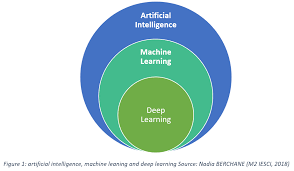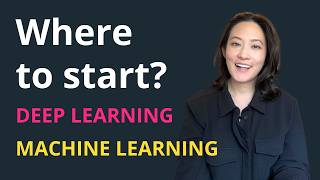Understanding Artificial Intelligence and Machine Learning
Artificial Intelligence (AI) and Machine Learning (ML) are two of the most transformative technologies of our time. They are reshaping industries, enhancing the way we interact with technology, and opening new frontiers in research and development.
What is Artificial Intelligence?
Artificial Intelligence refers to the simulation of human intelligence processes by machines, particularly computer systems. These processes include learning, reasoning, problem-solving, perception, and language understanding. AI systems are designed to perform tasks that typically require human intelligence.
Types of AI
- Narrow AI: Also known as Weak AI, it is designed to perform a narrow task (e.g., facial recognition or internet searches).
- General AI: This type of AI has the ability to understand, learn, and apply knowledge across a wide range of tasks at a level comparable to human beings.
- Superintelligent AI: A hypothetical form where machines surpass human intelligence in all fields.
The Role of Machine Learning
Machine Learning is a subset of AI that involves the use of algorithms and statistical models that enable computers to improve their performance on tasks through experience. In essence, it allows computers to learn from data without being explicitly programmed for specific tasks.
Key Components of Machine Learning
- Algorithms: The mathematical instructions that guide how data is processed and learned from.
- Data: The raw information inputted into ML models for training.
- Models: The output after an algorithm processes data; used for making predictions or decisions without further programming.
The Impact on Industries
The integration of AI and ML into various sectors has led to significant advancements. In healthcare, these technologies assist in diagnosing diseases with greater accuracy. In finance, they help detect fraudulent activities by analyzing transaction patterns. Autonomous vehicles use AI-driven systems for navigation and safety features.
The Future of AI and ML
The potential applications for AI and ML are vast. As these technologies continue to evolve, they promise even more profound impacts on society. From personalized education platforms that adapt to individual learning speeds to predictive maintenance systems in manufacturing that reduce downtime—AI and ML are set to revolutionize every aspect of life.
The ethical considerations surrounding these technologies also remain a critical area for discussion. Ensuring transparency, fairness, and accountability in AI systems will be essential as their influence grows.
Conclusion
The journey into artificial intelligence and machine learning is just beginning. With ongoing research and development, these technologies will continue to push boundaries, offering innovative solutions across various fields while posing new challenges that society must address collectively.
8 Essential Tips for Mastering Artificial Intelligence and Machine Learning
- Understand the basics of AI and ML before diving into advanced topics.
- Stay updated with the latest trends and advancements in AI and ML.
- Practice coding and implementing algorithms to strengthen your skills.
- Utilize online courses, tutorials, and resources to enhance your knowledge.
- Collaborate with peers in the field to learn from each other’s experiences.
- Experiment with different datasets to gain practical experience in machine learning.
- Be patient and persistent as mastering AI and ML concepts takes time and effort.
- Always keep ethics in mind when developing AI systems to ensure responsible use.
Understand the basics of AI and ML before diving into advanced topics.
Before exploring advanced topics in artificial intelligence and machine learning, it’s crucial to grasp the fundamentals. Understanding the basics provides a solid foundation that makes complex concepts easier to comprehend and apply effectively. This includes familiarizing oneself with key terms such as algorithms, data sets, and models, as well as gaining insight into how these components interact to enable machines to learn and make decisions. By establishing a strong foundational knowledge, individuals can approach more sophisticated AI and ML subjects with confidence, ensuring they can leverage these technologies’ full potential in practical applications.
Stay updated with the latest trends and advancements in AI and ML.
Staying updated with the latest trends and advancements in artificial intelligence (AI) and machine learning (ML) is crucial in today’s rapidly evolving technological landscape. As these fields continue to advance, new techniques, tools, and applications are constantly emerging, offering innovative solutions to complex problems. By keeping abreast of the latest developments, individuals and organizations can leverage cutting-edge technologies to enhance efficiency, drive innovation, and maintain a competitive edge. Moreover, understanding current trends helps in anticipating future changes and preparing for the challenges and opportunities they may bring. Engaging with industry news, attending conferences, participating in webinars, and joining professional networks are excellent ways to stay informed about the dynamic world of AI and ML.
Practice coding and implementing algorithms to strengthen your skills.
Practicing coding and implementing algorithms is a crucial step in strengthening your skills in artificial intelligence and machine learning. By actively engaging with code, you gain a deeper understanding of how various algorithms work, from decision trees to neural networks. This hands-on experience allows you to see firsthand how theoretical concepts are applied in real-world scenarios, enhancing both your problem-solving abilities and technical expertise. Additionally, working on coding projects helps you become familiar with different programming languages and tools commonly used in AI and ML, such as Python, TensorFlow, and PyTorch. As you build and refine your own models, you’ll develop the confidence needed to tackle more complex challenges and contribute effectively to innovative projects in the field.
Utilize online courses, tutorials, and resources to enhance your knowledge.
In today’s fast-evolving technological landscape, staying updated with the latest advancements in artificial intelligence (AI) and machine learning (ML) is crucial. One of the most effective ways to enhance your knowledge in these fields is by utilizing online courses, tutorials, and resources. Platforms like Coursera, edX, and Udacity offer comprehensive courses designed by industry experts and top universities, covering everything from basic concepts to advanced techniques. Additionally, websites such as GitHub provide access to open-source projects that allow learners to gain hands-on experience by experimenting with real-world AI and ML applications. By leveraging these resources, individuals can continuously develop their skills and stay competitive in an ever-changing job market.
Collaborate with peers in the field to learn from each other’s experiences.
Collaborating with peers in the field of artificial intelligence and machine learning is a valuable tip that can significantly enhance your understanding and expertise in these technologies. By sharing experiences, insights, and best practices with others working in the same domain, you can gain new perspectives, learn about different approaches to problem-solving, and stay updated on the latest trends and developments. This collaborative effort not only fosters a sense of community but also accelerates your learning process by leveraging the collective knowledge and experiences of your peers.
Experiment with different datasets to gain practical experience in machine learning.
Experimenting with different datasets is a crucial step for anyone looking to gain practical experience in machine learning. By working with a variety of data, you can better understand how different algorithms perform under diverse conditions and learn to handle the unique challenges each dataset presents. This hands-on approach allows you to explore the intricacies of data preprocessing, feature selection, and model evaluation. Additionally, experimenting with various datasets helps develop problem-solving skills and adaptability, as you’ll encounter real-world scenarios that require tailored solutions. Ultimately, this practice not only enhances your technical skills but also prepares you for the complexities of applying machine learning in real-world applications.
Be patient and persistent as mastering AI and ML concepts takes time and effort.
Mastering artificial intelligence and machine learning concepts requires a significant investment of time and effort, so it’s essential to approach the learning process with patience and persistence. These fields are complex and rapidly evolving, often presenting challenges that can be daunting for beginners. However, with a steady commitment to learning and continuous practice, one can gradually build a solid understanding of core principles such as algorithms, data processing, and model training. Staying patient allows for deeper comprehension and retention of knowledge, while persistence ensures steady progress despite any setbacks encountered along the way. Embracing this mindset not only fosters personal growth but also opens up exciting opportunities in the ever-expanding landscape of AI and ML.
Always keep ethics in mind when developing AI systems to ensure responsible use.
When developing AI systems, it’s crucial to always keep ethics at the forefront to ensure their responsible use. Ethical considerations in AI development include ensuring transparency, fairness, and accountability in how these systems operate and make decisions. Developers must be mindful of potential biases in data and algorithms that could lead to unfair treatment or discrimination. Additionally, safeguarding privacy and securing data are essential to maintaining trust with users. By prioritizing ethical principles, developers can create AI systems that not only enhance technological capabilities but also promote societal well-being and protect individual rights.



